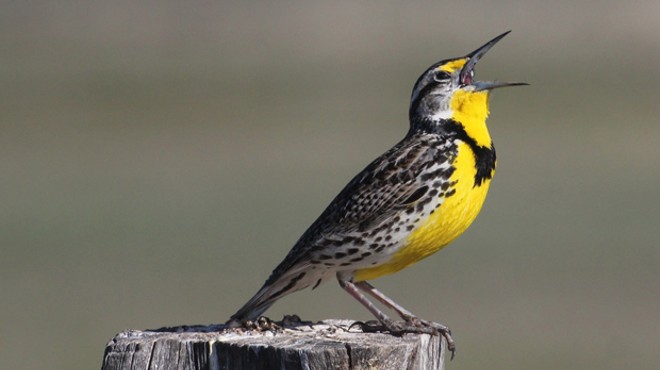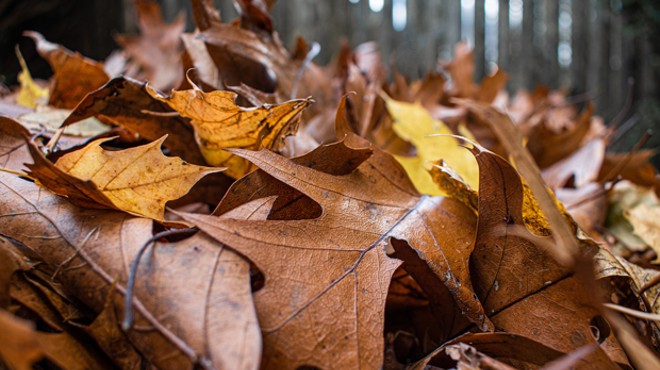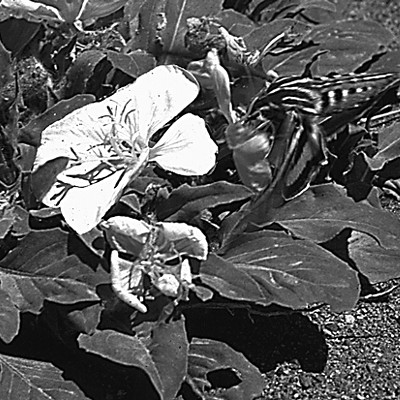During spring, have you ever found yourself bobbing and weaving to avoid being bonked in the head by half-inch-long fuzzy missiles?
Those big buzzers are bumblebees—bumblebee queens, to be exact. Every male bumblebee in North America died by the start of last winter, so the future of bumblebee species depends, as always, on the queen bees who survive till spring.
No wonder those queens are in such a no-nonsense hurry to get past you and on with the business of raising families to ensure the survival of their species.
The queens of spring
As the soil warms up and early flowers start to bloom, bumblebee queens crawl out of abandoned rodent holes, compost heaps, piles of leaves and other sites where they've hibernated unnoticed all through the long, cold, wet Bend winter.
Many queens that tucked themselves away last winter didn't survive. Lots of them starved, froze to death or drowned during winter storms. The fortunate ones chose overwintering sites that didn't collapse or get washed away, and they stored up just enough fat in fall to shiver their way through all those long nights.
Those spring survivors are the bees that buzz by our heads like post-hibernation black bears, hunting rather frantically for nourishment. Note that we're talking here about bumblebees, which are one of many types of native bees that are essential to life in the high desert. You'll also see honeybees, which are smaller, aren't native and have a whole other life story.
Assuming a queen bumblebee finds enough spring blooms in our yards and wild areas, she'll start working on the next stage of her lifecycle: reproduction. First, she'll scout out a nesting spot, which might be a hole in the ground or some loose soil under a garden shed. She won't hang photos on the walls, but she will tamp down the dirt to suit her taste and fill it with balls of food (nectar and pollen, held together with wax from her abdomen) to support herself and her young.
Passing the torch
By early summer, each queen will have laid and incubated her first eggs, vibrating her flight muscles to keep them warm. The larvae that emerge will mature into worker females. These much smaller non-queens will guard and clean the nest, collect nectar all summer, and tend to future generations, relieving the queen of some of her responsibilities.
At some point, the queen will never leave the nest again, becoming a full-time homemaker (albeit one with a lot of in-home servants).
In late summer, the aging, balding queen will start laying eggs that will become males and queens. The males have a straightforward role to play over the course of their brief lives: They'll leave the nest and try to find young queens from other nests to mate with. The males sleep by themselves outside the nest, so on a summer evening you can look for them snoozing on your plants.
By fall, the new queens will likewise leave the nest, feeding intensively on late blooms like goldenrods to build up fat for hibernation. They'll also mate and store the sperm through the long winter months ahead.
How to help save the bees
You may have heard about the need for "all-season blooms" to help native pollinators like bumblebees—now you know why they're so important.
Hungry bees need our help. Their lives depend on finding as many as 6,000 flowers a day on early-blooming plants like Oregon grape, wax currant and phlox — all of which we can plant in our backyards (ask the folks at WinterCreek Nursery for more native plant ideas). More than that, the bees need our public lands, where vast swaths of those same native plants grow wild.
Let me repeat: Bumblebees need up to 6,000 flowers each day! Think about that, and about all the parking lots, new homes and other developments that have removed plants from our community in recent years.
Think too about the widespread use of Roundup and other insect-killing chemicals, and you can begin to understand why at least six of the two dozen or so bumblebee species in Central Oregon are at risk of extinction. Which, not for nothing, eventually puts our lives at risk because we all have plant-based diets (plants themselves and animals that eat plants).
But let's end on a simple and happy note: Planting a variety of native shrubs and wildflowers that bloom from spring through fall is fun and will make our backyards (and medians and roundabouts and farms) more beautiful. Then we'll all reap the rewards, as more queens and other native bees buzz through our lives.
-LeeAnn Kriegh is author of "The Nature of Bend" and "The Nature of Portland," available now at local booksellers and at natureofbooks.com.
























